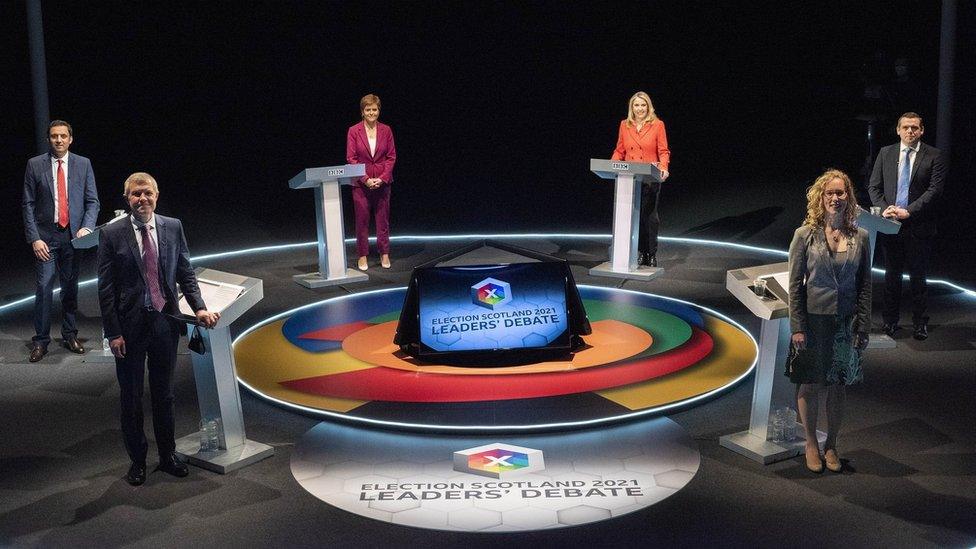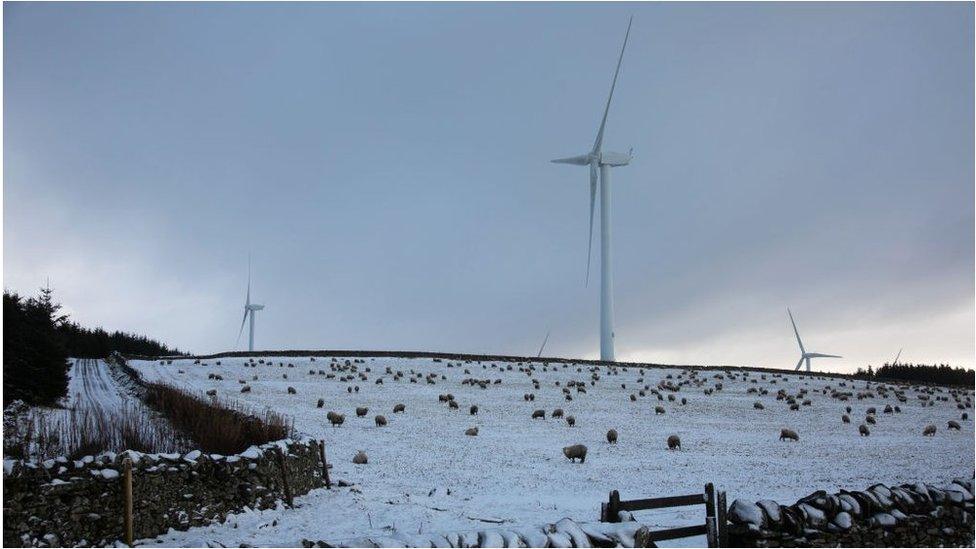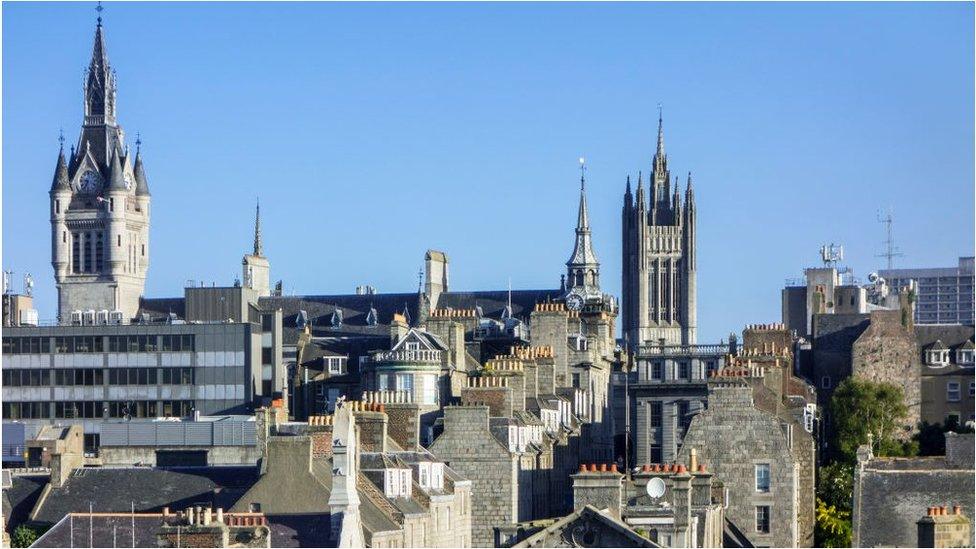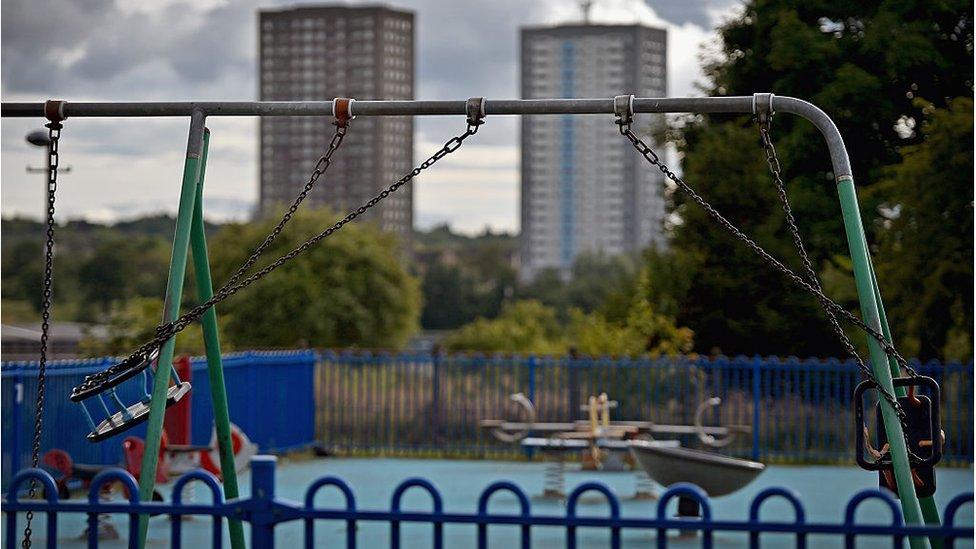Scottish election 2021: Leaders' debate fact-checked
- Published

The five leaders of Scotland's larger political parties have taken part in their first televised debate of the 2021 Holyrood election campaign.
In front of a "virtual" audience, the SNP's Nicola Sturgeon, the Conservatives' Douglas Ross, Labour's Anas Sarwar, Willie Rennie of the Liberal Democrats and Lorna Slater of the Greens set out their policies and made a series of claims.
We've looked at some of them.


Nicola Sturgeon: "97% of our electricity already comes from renewable sources"
The First Minister was speaking about the Scottish government's measures to reduce emissions.
It is correct that in 2020, the equivalent of 97.4% of Scotland's electricity demand came from renewables.
That's an impressive increase from the figure of 24% in 2010.
But it is worth noting that the Scottish government's target, set in 2011, was to achieve 100% from renewable sources in 2020.
That target was narrowly missed.

Douglas Ross: "You promised in three manifestos to reform council tax - why are people still paying council tax?"
The Scottish Conservative leader accused the SNP of failing to reform council tax.
Nicola Sturgeon protested that it had been frozen while the SNP has been in office and is lower in Scotland.
The abolition or reform of council tax was indeed promised three times, but changes have been limited.
In 2007, the incoming SNP administration said the "hated council tax" would go and be replaced with a local income tax.
As a minority administration, it failed to get sufficient support for that, but did start freezing the tax.
When it got a majority in 2011, it continued to freeze it and began negotiating reforms that led to people with bigger houses paying slightly more.
After a nine year freeze, it briefly allowed councils to raise it, and then froze it again last year and for 2021-22.
The SNP leader argued that council tax is lower in Scotland. At band D, the average Scottish bill in 2020-21 is £1308, in Wales it is £1667 and in England it is £1818.

Anas Sarwar: "One in four children in Scotland live in poverty. In her own constituency almost 50% of children live in poverty"
Scottish Labour leader Anas Sarwar was criticising the first minister's record on poverty.
The first part of that claim is correct. Scottish government statistics, external published last week estimated that 24% of children (240,000 children a year) were living in relative poverty after housing costs in 2017-20.
But the claim about the first minister's constituency is more difficult to get to the bottom of. Nicola Sturgeon is MSP for Glasgow Southside.
Scottish Labour say their figure comes from research done by Loughborough University that was published in 2019. The academics there say they now do their research in Westminster constituencies not Holyrood ones and that their methodology has improved considerably since the 50% figure.
Nicola Sturgeon's Holyrood constituency is in the Westminster constituency of Glasgow South for which the child poverty figures are significantly lower than 50%.

SCOTLAND'S ELECTION: THE BASICS
What elections are happening? On 6 May, people across Scotland will vote to elect 129 Members of the Scottish Parliament (MSPs). The party that wins the most seats will form the Scottish government. Find out more here.
What powers does the Scottish Parliament have? MSPs pass laws on most aspects of day-to-day life in Scotland, such as health, education and transport. They also have control over some taxes and welfare benefits. Defence, foreign policy and immigration are decided by the UK Parliament.
How do I vote? Anyone who lives in Scotland and is registered to vote is eligible, so long as they are aged 16 or over on the day of the election. You can register to vote online, external.

Willie Rennie: "We've got 1,500 young people who are waiting for mental health support for over a year"
Scottish Liberal Democrat leader Willie Rennie said: "We've got 1,500 young people who are waiting for mental health support for over a year"
This is correct. The most recent official waiting times statistics for Scotland's child and adolescent mental health services (known as Camhs) showed that in December there were 1,560 patients who had waited more than 52 weeks.
This equates to about 14% of patients, according to Public Health Scotland, external.
Lorna Slater: "I'm proud that I am part of a candidate list that is 70% women"
Female representation at Holyrood is nowhere near the 50:50 that campaigners want. Only 36% of the current chamber is female, slightly ahead of Westminster but behind the Welsh Parliament.
Across the eight Scottish Parliament regions, women top the Greens' list in five regions. At the top of the list in the other three regions are men who are already MSPs.
Based on the list of declared candidates for the list seats there do appear to be more female than male candidates standing for the Scottish Greens. Nominations have not yet closed but, as things stand, it looks like the party will have more than half but perhaps not as many as 70% of its candidates being female.
And having a significant number of women on the lists does not guarantee getting more women in parliament. To do that, they have to be in winnable seats or feature high up on a party's regional list of candidates.
Indeed, in 2016, half the Green candidates were women. The party won six seats, but ended up with five male MSPs and only one female representative - Alison Johnstone in Lothian.
The Scottish Greens later clarified that, based on polling, they expected 70% of those elected from their party to be women - seven female MSPs, and three male.


POLICIES: Who should I vote for?
PODLITICAL: Updates from the campaign



